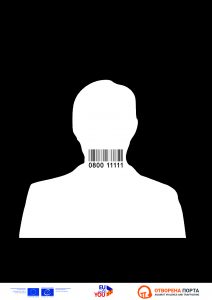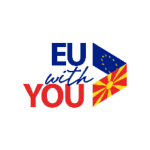 Within our co-operation with the European Union and the Council of Europe, as one of the grantees of their joint initiative “Horizontal Facility for the Western Balkans and Turkey 2019-2022” (Horizontal Facility II), Open Gate organized an open call for young upcoming graphic designers!
Within our co-operation with the European Union and the Council of Europe, as one of the grantees of their joint initiative “Horizontal Facility for the Western Balkans and Turkey 2019-2022” (Horizontal Facility II), Open Gate organized an open call for young upcoming graphic designers!
Trafficking in human beings is a serious and complex problem and one of the growing forms of organized crime on a global scale. The process of human trafficking implies a horrendous exploitation of the human body and labour, violating the most fundamental of human rights- from delimiting communication and movement, to violence and abuse.
Graphic design is definitely seen as the art or the modern civilization – this is why we decided to target young upcoming designers who transferred their creativity into creating effective awareness raising graphic designs which would be part of the campaign – “Opportunity or Exploitation”.
Today we are presenting you Angelina Velkova, the 2nd place awarded design.
A few words about yourself and the motivation to apply for this competition?
My name is Angelina Velkova, a postgraduate student of Architecture and Design at Goce Delchev University in Shtip. During my studies I was active in several non-governmental organisations and that is how I found out about Open Gate’s open call for graphic designers.
In the advertisement I saw an opportunity to express myself in a different way and at the same time to merge my two passions – design and raising awareness and informing young people about important social topics such as human trafficking.
How much can social networks help in informing young people about human trafficking and how easy or difficult is it to “fall” from social networks into the human trafficking network?
Social networks, which in the last decade have become the most widely used tool for sharing and receiving information, are a good platform for informing young people about all topics, including human trafficking.
I think that today’s youth is more than sufficiently versed in the way social networks work and easily recognize fraud. That is why I think that this “spontaneous” education and ability to sense certain dubious announcements and job offers can be used to warn and prevent abuse against the younger generations and those older ones who, although acting carefully, not always know how to assess the authenticity of the advertisement or publication.
In my opinion raising awareness, informing the public, as well as training on how to act in different situations is crucial in combating human trafficking.
Do you think graphic design can be a powerful tool for fostering social change?
In my opinion, graphic design is one of the strongest tools for fostering social change. The millions of images we see every day (whether intentionally or accidentally) enter our subconscious and if the message is clear enough and concise, we can easily perceive it and motivate ourselves to act on it, especially on topics as important as trafficking.
The emphasis here can be on marketing and the ability to “hypnotize” the human brain and its thoughts and actions precisely from the information received through the eye. Design, in any form, is a challenge and fulfills the designer to the maximum, it is done with pleasure and creativity and therefore it is a creative process of solving tasks and visual presentation of topics important for the society we live in now.
Finally, what is the message you want to convey to young people through your design?
One of Open Gate’s main services – the SOS helpline is the key message in the design of my poster – a light silhouette of a man in the dark is placed, the bar code indicates human trafficking and the center is the SOS number 0800 11111.
Even the smallest actions can save someone’s life, report human trafficking and labour exploitation – No one is anybody’s property!


This interview was produced with the financial support of the European Union and the Council of Europe. The views expressed herein are responsibility of the author and can in no way be taken to reflect the official opinion of either party.

